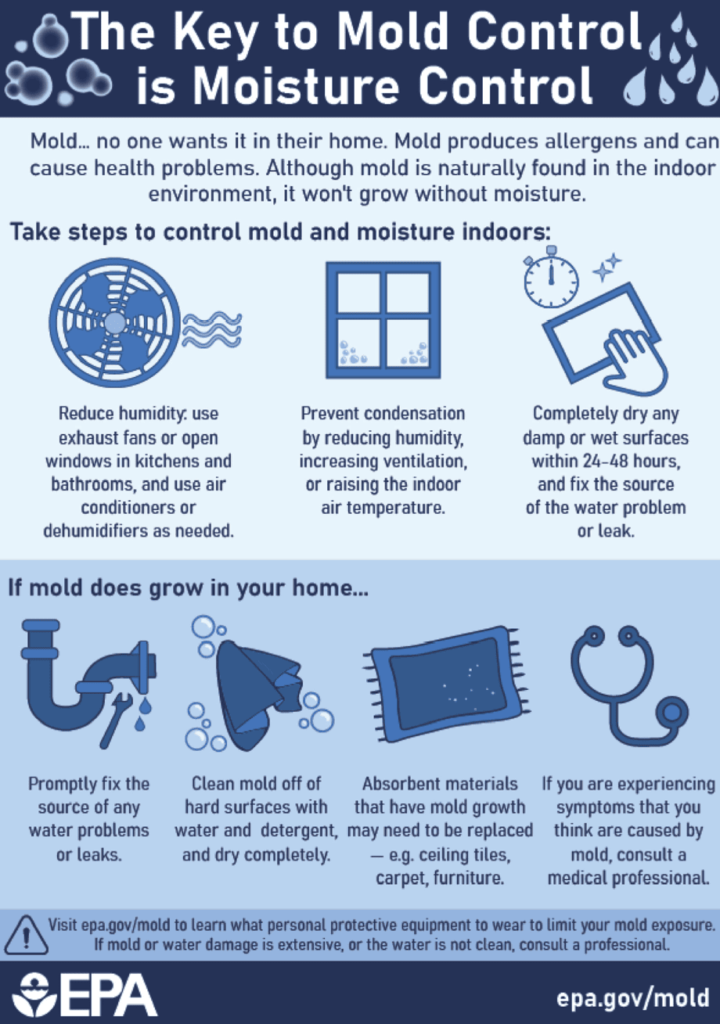
Moisture and mold control are crucial aspects of maintaining a healthy indoor environment. Learn how to effectively manage moisture levels in your home to prevent mold growth with our comprehensive Mold Solutions Guide.
Effective Strategies for Moisture and Mold Control in Your Home
Effective Strategies for Moisture and Mold Control in Your Home
1. Proper ventilation is key to preventing moisture buildup in your home. Ensure that bathrooms, kitchens, and other high-humidity areas are well-ventilated.
2. Address any water leaks promptly to prevent mold growth. Inspect pipes, roofs, and windows regularly for signs of leaks and fix them immediately.
3. Use dehumidifiers in damp areas to reduce moisture levels. Keeping indoor humidity below 60% can help prevent mold growth.
4. Inspect and repair any cracks or damage in your home’s foundation and walls. Water intrusion through these openings can lead to mold problems.
5. Clean and dry wet or damp areas within 24 to 48 hours. Promptly addressing spills, leaks, or flooding can prevent mold from developing.
6. Consider using mold-resistant products in moisture-prone areas of your home. These materials can help inhibit mold growth.
7. Regularly clean and maintain your HVAC system to prevent mold spores from circulating in your home. Change filters regularly and schedule professional inspections as needed.
Frequently Asked Questions
How can I prevent moisture buildup in my home to avoid mold growth?
To prevent moisture buildup in your home and avoid mold growth, ensure proper ventilation, use dehumidifiers, fix any leaks promptly, insulate cold surfaces, and maintain a consistent indoor temperature.
What are the common signs of mold infestation that I should look out for?
The common signs of mold infestation to look out for include musty odors, visible mold growth, water stains or discoloration on walls or ceilings, and allergy symptoms like sneezing or coughing.
Are there natural ways to control moisture and mold in my living space?
Yes, there are natural ways to control moisture and mold in your living space, such as proper ventilation, using dehumidifiers, and maintaining a clean environment.
What are the potential health risks associated with mold exposure?
Exposure to mold can lead to a range of health risks, including respiratory issues, allergies, asthma exacerbation, and skin irritation. Additionally, prolonged exposure may cause more severe reactions in individuals with compromised immune systems. Regularly checking for and addressing mold growth is crucial for maintaining a healthy indoor environment.
How often should I inspect my home for mold and moisture issues?
It is recommended to inspect your home for mold and moisture issues at least once a year, ideally before or after the rainy season.
In conclusion, proper moisture control is key to preventing mold growth in any indoor environment. By implementing effective mold solutions, such as maintaining adequate ventilation and monitoring humidity levels, you can create a healthier living space for you and your family. Remember, early detection and prompt action are crucial in the battle against mold. Stay vigilant, stay proactive, and say goodbye to mold for good with the help of our Mold Solutions Guide.
![]()